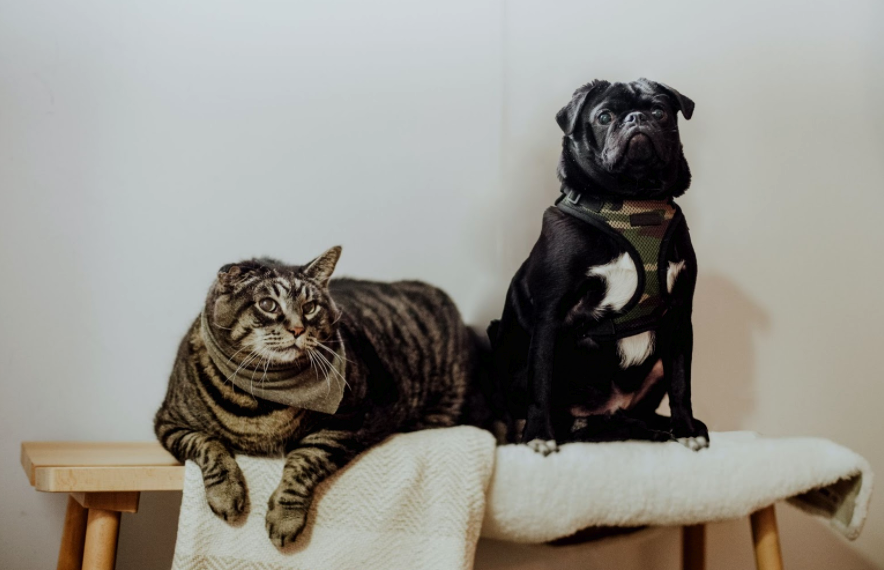True, some cats and dogs do not make good housemates because they are two different creatures with two distinct personalities. Many cats and dogs will, however, coexist in complete harmony under the right circumstances.
Cats that buddy up with their canine partners, dogs chasing cats off their turf, or the two animals politely avoiding each other is the order of the day according to most pet owners. They don’t have to fight like it is the rule of thumb. Their ability to get along is influenced by their individual interactions with the other species prior to pairing. Their communication styles are often different, which can lead to misunderstanding: A dog’s tail wags to signify happiness and eagerness to play, while a cat’s tail lashes to indicate displeasure or wrath. You will make it easier for them to share a home by considering and pet’s best interests and instincts.
Human intervention is needed when dogs and cats live together!
Humans have a distinct advantage over animals. Typically, we are the parent, the alpha male or female, or the pack leader.
Animals instinctively recognize that if a person is involved, they may not be in complete control. If they don’t, it’s our duty to inform them that we are in control. The person in charge of the first few encounters between puppies and kittens should be aware that if a fight breaks out or if one of the pair feels threatened in some way, they must intervene.
If it appears that the two may not get along or bond, quick reflexes will be required to defend a puppy or kitten from the jaws of the other. The last thing you want is for a puppy or kitten to be clawed or bruised to the point of requiring veterinary surgery.
Introduce them at a young age
The age of your cat and dog has a significant impact on their ability to coexist peacefully. It is highly recommended that you introduce them at a young age. They are also evolving during their puppy and kitten stages. Younger pets will be able to grow up together and get to know their fur siblings. When it comes to building a dominance hierarchy, they are much less aggressive and more subdued.
Introducing a puppy to a resident kitten, (or vice versa) is a delicate process that can take weeks or months. Be careful, but keep in mind that whether or not your pets get along is as much down to their personalities as it is of the actions you take. To increase your chances of success, follow these guidelines:
Select a suitable venue for the first meeting
If your cat has lived in the house for a long time, it will not be comfortable accommodating another animal in its territory without a fight. Establish a neutral spot to introduce them.
Separate them at first
Keep one animal confined and set the other one free, but do it in turns until they both successfully get used to each other’s scent.
Allow all pets to be in the same room at the same time for face-to-face introductions, but keep the dog tightly under leash. Let the situation remain so until your cat has calmed down and is ignoring the dog, and vice versa.
Proceed with caution
When the pets get along during several brief introductions, they’re ready to move on to the next level. Remove the dog’s leash and allow the animals to get to know each other. Do not leave them alone until they are fully at ease with each other.
How can you keep them apart when you’re not around?
Dogs are a lot easier to keep under leash or confined than cats. If anyone is available to let the dog out for a walk at noon, crating the dog might be an option. If crating doesn’t work, you might have to isolate them in rooms separated by a door. Infant gates are perfect for keeping a puppy contained, but if a cat tries to get to the puppy, she would consider a gate to be a slight annoyance. It’s also really important to ensure your pets have their own designated sleeping spaces, a place where they can feel safe and relax away from the other. With that in mind, it’s worth investing in a calming dog bed for your pooch, and a snuggly cat cave or bed for your kitty which they can hide in; a place where they can retreat to if they’re feeling like their personal space has been invaded!
These extra measures might no longer be necessary once you grow confident that your pets can get along.
Final thoughts
If you choose to share your home with a dog and a cat, don’t worry; it’s possible. They can be the greatest companions in your household, but there are no guarantees. Cats and dogs can be trained to form bonds and become companions, and all it takes is your input from the word go.
It takes a little patience and time on your part, as well as a basic understanding of dog breeds, to choose a dog that will get along with a cat naturally.
Dogs and cats have a history of coexisting comfortably and happily in many homes. With the above tips, you can create the best possible environment for everyone around your home.
Love our content? Share it with a friend or link it to social media. Like short clips of cute household pets? Training tips? Follow us on instagram @nydognanny or on YouTube at nydognanny. Have some news you needs to get to dog and cat parents stat? Email info@newyorkdognanny.com with your article pitch.
Photo by Priscilla Du Preez on Unsplash




